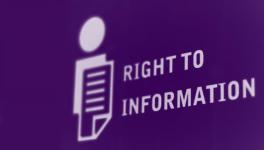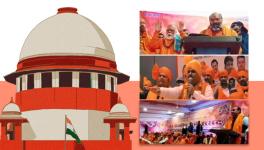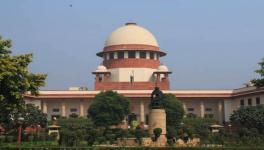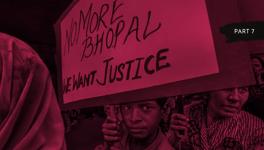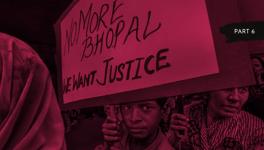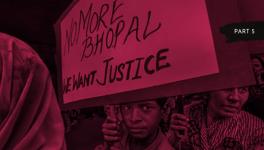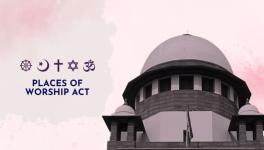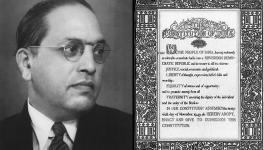2009 Dantewada Tribals Massacre: Why SC's Directions Against Petitioners are Shocking
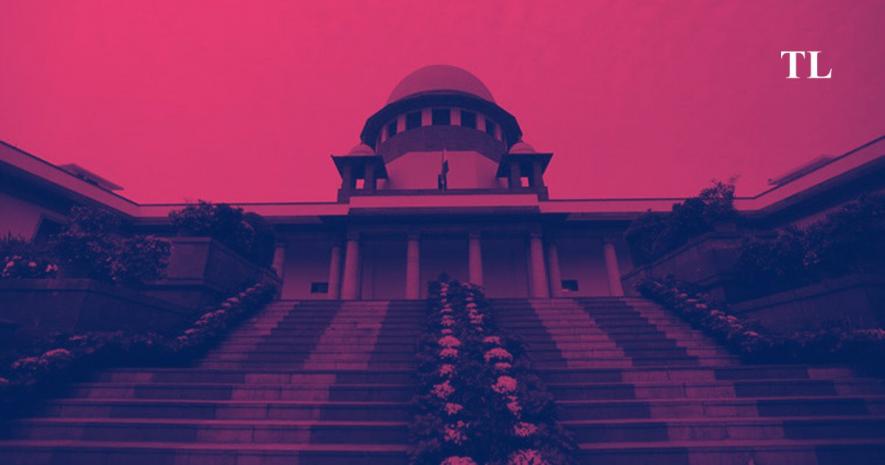
THE Supreme Court’s judgment, in the case of Himanshu Kumar & Ors. versus State of Chhattisgarh & Ors., delivered on July 14 by a division bench comprising Justices A.M. Khanwilkar, who is retiring on Friday, and J.B. Pardiwala, has led to outrage. The bench dismissed the writ petition that alleged that the Chhattisgarh government and the paramilitary forces were responsible for the massacre of tribals in Dantewada district in 2009. The bench held that it does not warrant any further investigation by the Central Bureau of Investigation (‘CBI’) into the first information reports (‘FIRs’) filed by the petitioners, as prayed by them. The court relied on the chargesheets filed and the investigation conducted by the police, and observed that Naxalites alone were responsible for the massacre.
Further, the court left it to the discretion of the Chhattisgarh government or the CBI to take necessary actions against the petitioners for filing false charges under Section 211 of the Indian Penal Code (‘IPC’), or for criminal conspiracy or any other charges. Rejecting the writ petition, the court directed petitioner No.1, Himanshu Kumar, to pay exemplary costs of rupees five lakhs. Further, the court mandated the amount to be paid within four weeks to the Supreme Court Legal Services Authority, and directed the authority to take appropriate action to recover the costs.
Refusing to pay the exemplary cost, Kumar stated that such direction by the court is tantamount to imposing punishment for filing petitions seeking justice. “Paying such a cost would mean we are accepting that Adivasis are telling lies and making false allegations”, Kumar told The Leaflet. Kumar also called it “an attempt aiming to silence those raising human rights violations issues”.
The timeline
- March 18, 2008: Three tribals allegedly killed by the Chhattisgarh Police and SPOs
- September 17, 2009: Massacre of seven villagers in Gachanpalli, situated in the district of Dantewada, Chhattisgarh on account of anti-Naxal operation.
- October 01, 2009: Massacre of seven villagers in Gompad, one in Belpocha and one in Nulkatong, in the district of Dantewada, Chhattisgarh on account of anti-Naxal operation.
- October 27, 2009: Filing of writ petition by Himanshu Kumar and others in the Supreme Court.
- January 8, 2010; February 21, 2010; February 22, 2010: Three out of six FIRs reveal that killings were allegedly by ‘20-25 unknown uniformed persons holding gun and banda’.
- February 04, 2010: Counter-affidavit filed by the state of Chhattisgarh. Subsequently, replies were filed by other respondents.
- February 15, 2010: Order passed by a coordinate bench for statements of the petitioners to be recorded by District Judge-I (Tis Hazari, Delhi), G.P. Mittal.
- March 11, 2010: Statements of petitioners recorded under Section 164 of the CrPC.
- September 09, 2010: Chargesheet filed. Ten absconding accused named under Sections 396 and 397 of the IPC, and Sections 25 and 27 of the Arms Act.
- July 14, 2022: Supreme Court rejects the writ petition and imposes exemplary costs of Rupees Five Lakhs on Kumar.
The Leaflet breaks down this judgment.
What was Himanshu Kumar’s contribution to the writ petition?
The writ petitioner no.1, Himanshu Kumar, is a tribal rights activist who ran an NGO called Vanvasi Chetna Ashram in Dantewada, Chhattisgarh. The organisation worked for the welfare and development of tribals from the Bastar region.
In 2009, during an anti-Naxal operation in Chhattisgarh, 16 tribals were allegedly massacred in the villages of Gachhanpalli, Gompad, and Belpocha, in Dantewada district. Kumar aided the tribals in lodging the complaint against the alleged massacre on September 17, 2009, and October 1, 2009. Consequently, the present writ petition, challenging the investigation by the police, was filed in 2009.
The twelve petitioners (petitioners nos. 2 to 13) are the kith and kin of the victims of the alleged massacre. The writ petition alleged that the Chhattisgarh Police, Special Police Officers (‘SPOs’), the activists of Salwa Judum (a group of vigilantes sponsored by the Chhattisgarh government) and the Paramilitary Forces, consisting of the Central Reserve Police Force 2 and the CoBRA Battalions (Commando Battalions for Resolute Action), were responsible for the alleged brutal massacre of the tribals.
Refusing to pay the exemplary cost, Kumar stated that such direction by the court is tantamount to imposing punishment for filing petitions seeking justice. “Paying such a cost would mean we are accepting that Adivasis are telling lies and making false allegations”, Kumar told The Leaflet.
The petition alleged that on January 8, 2009, 19 people were killed by the security forces at Singaram village in Konta tehsil of Dantewada district. Further, it alleged that three tribals were killed by the Chhattisgarh police and SPOs at Matwada, Salwa Judum Camp, Bijapur district.
Solicitor General of India, Tushar Mehta submitted that Kumar was only ‘claiming’ to work for the welfare of tribals through an NGO. He stated, “…the petitioners nos. 2 to 13 are absolutely rustic and illiterate tribals. It is at the instigation of petitioner no.1 that they might have thought it fit to join as the petitioners”.
Why did the petitioners pray for an investigation by the CBI?
Under Articles 32 and 226 of the Constitution, constitutional courts have the power to issue directions to the CBI to conduct investigation. Proving the need for an impartial investigation is a precondition, and submission of a chargesheet does not prevent the court from directing the further investigation, the Supreme Court held in this case.
The senior counsel appearing for the petitioners, Colin Gonsalves sought directions to have the CBI investigate the FIRs into the two incidents (filed on September 17, 2009, and October 1, 2009) of the alleged massacre. Secondly, the petition sought compensation for the victims and their families for the extrajudicial executions, looting of their properties, burning of their houses, and other unlawful activities.
According to Kumar, on account of the involvement of the Special Forces and the State in the alleged massacre of the tribals, the CBI alone should undertake the investigation of all the complaints and FIRs. The petitioners highlighted that after the registration of the FIRs, the police failed to take action, including failing to undertake arrests, conduct a proper investigation, and record statements of eyewitnesses.
Under a criminal miscellaneous petition of 2010, the petitioners prayed for orders directing the government to constitute a Special Investigation Team (‘SIT’). Also, the petitioners prayed to produce petitioners nos. 2 to 12 and hand them over to Dr. Mohini Giri, Chairperson of Guild for Service, a a national voluntary developmental organization dedicated towards the empowerment of marginalized women and children, to permit petitioner no.1 Kumar and his advocate to meet petitioners nos. 2 to 12, and to request Dr. Giri to interview the petitioners and make a report to the court.
Also read: Chhattisgarh: Special court acquits tribal activist Soni Sori, 3 others in Naxal payoff case
How was the petitioners’ plea of investigation by the CBI analysed by the court?
The respondents submitted that the FIRs were thoroughly investigated and charge sheets were filed. It was the contention of the respondents that the petitioners have failed to point out the manner in which the investigation conducted by the police was flawed. Thus, on account of such failure, the respondents opposed the petitioners’ case for further investigation.
“Firstly, since we were not relying on any proceedings undertaken by the perpetrators and the case was pending before the Supreme Court, there was no question of participating or relying on the investigation by the police. Secondly, we, as petitioners, were never informed about the proceedings or processes taken up by the police to give u justice.”: Kumar
In the 94-page judgment authored by Justice Pardiwala, the court analysed the issue of whether the petitioners have made out any case that justifies investigation by the CBI. The court stated that since the investigation has already been carried out followed by the filing of a chargesheet, the petitioners’ plea turns out to be for further investigation. The lack of knowledge of the petitioners pertaining to charge sheets and the materials collected during the investigation was pointed out by the court.
On this contention of the respondents and the subsequent observation of the court, Kumar told The Leaflet, “Firstly, since we were not relying on any proceeding undertaken by the perpetrators and the case was pending before the Supreme Court, there was no question of participating or relying on the investigation by the police. Secondly, we, as petitioners, were never informed about the proceedings or processes taken up by the police to give us justice.”
Also read: Chhattisgarh: Civil Society Members Demand Release of Tribal Rights Activist Arrested Under ‘Naxal Charges’
What was the issue of discrepancy in the statements of petitioners recorded by a Judicial Officer in 2010?
The Supreme Court referred to the statements of the petitioners recorded before the District and Sessions Judge, Tis Hazari, Delhi, on the direction of a coordinate bench. As per this testimony of the petitioners, unknown people from the forest caused the killings. The counsel for the petitioners, Gonsalves, pointed out the incorrectness of the manner in which the Judicial Officer of the rank of District and Sessions Judge had, in 2010, recorded the statements, by way of failure to pose specific questions to the petitioners.
The court rejected Gonsalves’ contention and observed that in the twelve years since the recording of the statements, the petitioners failed to raise any grievance. The petitioners’ statements ‘demolish’ the contentions of the entire case raised by Kumar, the court noted.
The court remarked, “…no case worth the name for further investigation or re-investigation, could also be said to have made out”. It further observed, “There is not an iota of material figuring in the investigation on the basis of which even a finger can be pointed towards the members of the police force.”
Subsequently, it highlighted that the accused mentioned in the chargesheet are absconding. It left the matter for the trial court to give necessary directions and for the investigating agency to take appropriate steps on this aspect.
On this approach of the court of relying on the statements recorded by the judicial officer, Kumar told The Leaflet, “How can the court expect the Adivasis to approach the court again and again with their grievances? The statements before the magistrate were made by petitioners who were kidnapped by the police, kept under police custody, and brought for the recording of the statement by the police themselves. How can you expect Adivasis to accuse the same police personnel to be perpetrators? The statements were made under the threat to their life and liberty. Relying on such testimony and coming to a conclusion is the murder of justice by the Court”.
What is the basis for the respondents’ plea to charge the petitioners?
In reply to the petition, the government submitted that the attack by Naxalites on the police was ‘cursorily’ referred to as a ‘massacre’. The respondents contended that the petition levelled false allegations against the police and paramilitary forces to portray the “Left Wing Extremists (Naxals)” as innocent tribal victims massacred by security forces. In one of its affidavits, the government stated that the writ petitions were filed by “Naxal sympathisers”. Whereas, according to respondent no.3, the petitioners have attempted “…to demoralise the security forces by tarnishing their image and shaking their confidence”.
The statements before the magistrate were made by petitioners who were kidnapped by the police, kept under police custody, and brought for the recording of the statement by the police themselves. How can you expect Adivasis to accuse the same police personnel to be perpetrators? The statements were made under the threat to their life and liberty. Relying on such testimony and coming to a conclusion is the murder of justice by the Court.”: Kumar
In an interlocutory application, the Union Government prayed to, firstly, hold the petitioners guilty of levelling false charges, and giving false and fabricated evidence; secondly, to direct any central investigating agency to register an FIR and conduct investigation to identify the individuals/organisations who have been ‘conspiring, abetting and facilitating’ filing of such petitions; and thirdly, to direct action against the petitioners and others for acts of perjury.
The application highlighted the intention of the petitioners to allegedly “…deter the security agencies to act against Left Wing (Naxal) militia by imputing false charges on them or screen off the Left Wing (Naxal) militia from being brought to justice…” The application further submitted, “…the modus adopted in the instant case, has over the period of time, become a norm where false petitions are filed by individuals and organization who are either supporters of Left Wing Extremism or benefit, financially and politically…”
Also read: Pushed to the brink, adivasis march against coal mine expansion in Hasdeo Arand, Chhattisgarh
What was the legal basis for the court to direct a probe into the respondents’ allegation of false and fabricated evidence by the petitioners?
The court referred to and analysed the interlocutory application (filed under Section 340 read with Section 195 of the Code of Criminal Procedure (‘CrPC’)) in which the Union Government prayed to initiate proceedings against the petitioners for the offence of perjury under Section 193 of the IPC, and the giving and fabricating of false evidence under Sections 191 and 192 of the IPC. The court referred to its judgment in K. Karunakaran versus T.V. Echara Warrier & Anr. (1977), and a catena of other judgments, to delve into the conditions of filing a complaint for giving a false affidavit or evidence in a proceeding before a court.
The court analysed section 211 of the IPC on ‘false charge of offence made with intent to injure.’ Explaining the applicability of the section in the present case, the court noted that the FIRs filed by the petitioners were investigated, and the investigating agency found that Naxals were guilty of the massacre and the police force was not responsible. It held, “Prima facie, it could be said that false information was given by the first informants to the police as regards the alleged massacre by the police force”. In its analysis of the application of section 211, the court relied on its judgment in Santokh Singh versus Izhar Hussain & Anr. (1973).
“The police were accused in the massacre. Relying on the agency or department accused in the petition is the ignorance of basic principles of natural justice. The accused cannot be relied upon in any investigation in this case. How can the Advisasis or the petitioners rely on the police version of the incidents?”: Kumar
Granting the relief prayed under the interlocutory application, the court allowed the Chhattisgarh government and the CBI the discretion to take necessary and appropriate measures under the law to hold the petitioners responsible for imputing false and fabricated charges against the respondents. It stated, “We clarify that it shall not be limited only to the offence under Section 211 of the IPC. A case of criminal conspiracy or any other offence under the IPC may also surface.”
On the point of the court relying on the investigation conducted by the police, Kumar told The Leaflet, “The police were accused in the massacre. Relying on the agency or department accused in the petition is the ignorance of basic principles of natural justice. The accused cannot be relied upon in any investigation in this case. How can the Advisasis or the petitioners rely on the police version of the incidents?” On the direction of the Court to charge the petitioners under section 211 of the IPC or under other offences, Kumar stated, “If such a case is filed, it would be a baseless and an atrocious attempt aiming to silence those raising human rights violations issues and issues relating to resource-grab by corporates in the Adivasi areas”.
Also read: Why is there a surge of violence against Tribals in India?
Is charging petitioners a trend in the making?
Notably, on June 24, a Supreme Court bench comprising Justices Khanwilkar, Dinesh Maheshwari and C.T. Ravikumar had dismissed a petition filed by Zakia Ahsan Jafri, widow of former Parliamentarian Ehsan Jafri, that challenged the closure report filed by an SIT rejecting the accusation of conspiracy by high state functionaries in the perpetration of the Gujarat pogrom of 2002, in which Ehsan Jafri had been killed. While dismissing the petition, the bench noted, “… it appears to us that a coalesced effort of the disgruntled officials of the State of Gujarat along with others was to create sensation by making revelations which were false to their own knowledge.” The bench further noted, “… all those involved in such abuse of process, need to be in the dock and proceeded with in accordance with law.”
Consequently, the following day, a co-petitioner in the case, civil rights activist Teesta Setalvad, and former Director General of Police R.B. Sreekumar were arrested. The FIR against them records forgery, giving false evidence with intent to procure conviction, and conspiracy, amongst others, as offences allegedly committed by Setalvad.
Considering the directions by the court in the present case to charge Kumar and his co-petitioners, it begs the question of whether this is only the start of a trend by courts to incarcerate petitioners that raise criminal complaints affecting violation of fundamental rights against high government officials or influential persons.
The bottom line
- In 2009, a writ petition was filed in the Supreme Court that claimed the Chhattisgarh government and the paramilitary forces to be responsible for the alleged massacre of 16 tribals in three villages in Dantewada district of Chhattisgarh, and prayed for the CBI to conduct its investigation.
- On July 14, the Supreme Court rejected the petition, imposed a cost of rupees five lakhs on petitioner Himanshu Kumar, and held, “There is not an iota of material figuring in the investigation on the basis of which even a finger can be pointed towards the members of the police force”.
- The Court granted an application filed by the Union of India, allowing the petitioners to be criminally charged by the state of Chhattisgarh or the CBI for filing false and fabricated charges against the respondents. This, many fear, will have a chilling effect on the would-be public interest petitioners, who seek justice in extra-judicial killings.
Get the latest reports & analysis with people's perspective on Protests, movements & deep analytical videos, discussions of the current affairs in your Telegram app. Subscribe to NewsClick's Telegram channel & get Real-Time updates on stories, as they get published on our website.










